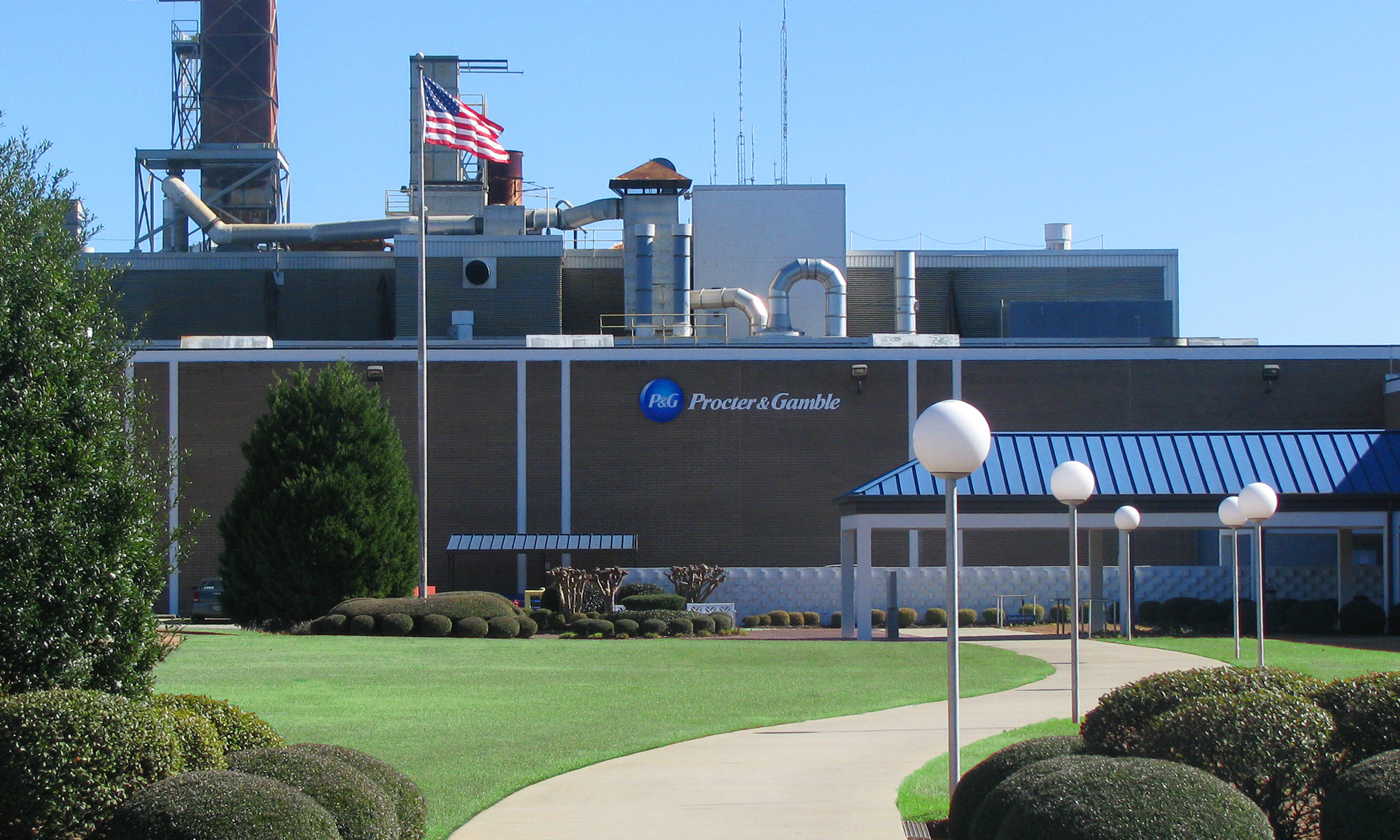Procter & Gamble (PG +0.06%) has been around for almost 200 years. Investors flock to this business because its dominant position in consumer staples like diapers, paper towels, and razors generates healthy returns through economic booms and busts.
P&G's future is anything but predictable at the moment, though, as it's trying to achieve what CEO David Taylor has called the biggest transformation in the company's history. Here are a few charts that capture that challenge, along with the trends that will drive shareholders' returns through this process.
1. Weakening results
PG Revenue (TTM) data by YCharts.
Revenue and earnings are both down substantially over the past five years. Sure, some of that slump can be pinned on foreign currency swings and the fact that P&G does a significant chunk of business in economic flashpoints like Brazil, Russia, and Venezuela. However, growth is disappointing even after accounting for those short-term challenges.
2. Disappointing organic growth

Data source: P&G financial filings.
P&G's organic sales have been flat or declined in seven of the last eight quarters while also trailing rivals like Kimberly-Clark (KB 2.06%) and Unilever (UL 1.09%), which have been posting 5% gains lately. These competitors have also managed to post strong volume growth while P&G has had to rely completely on price boosts for its organic gains. More than any other single metric, organic growth drives the business, so there can be no sustainable rebound until the company can get this figure back up toward its prior 3% to 4% pace.
3. Improving profitability
PG Cost of Goods Sold (TTM) data by YCharts.
Management's key response to the demand slump, slicing its costs, has been a big success. You wouldn't know it by looking at reported earnings, which are understated because of currency swings and divestments moves, but P&G's core profitability is spiking.
Taylor and his team have cut billions of dollars out of categories like cost of goods sold, advertising overhead, and the supply chain. As a result, earnings per share have increased at a double-digit pace in each of the last three fiscal years (after adjusting for currency swings). And once those exchange rate pressures lessen, it's likely P&G's reported profits will turn solidly higher.
4. Cash returns
PG Cash from Operations (TTM) data by YCharts.
Cash returns through dividends and stock repurchases represent a big part of P&G shareholders' total return. The company's improving efficiency has allowed cash flow to hover close to a new high even as reported earnings plunge. That's important because it has allowed P&G to fully fund investments in the business around research and development and advertising while still boosting shareholder returns. Management aims to deliver roughly $18 billion to investors in each of the next three fiscal years.
5. Smaller portfolio

BT = Before tax. Image source: P&G investor presentation.
Financial engineering will only take P&G so far, though, which is why executives are shifting their entire strategy in hopes of boosting sales and profit growth. It has sliced nearly 100 brands out of its portfolio that are mostly smaller, underperforming franchises, but it also removed a few blockbuster product lines like Coty's beauty products and Duracell batteries from the business.
Brand divestments have helped raise cash to support the faster-growing brands like Tide detergent and Pampers diapers. The divestments have also ensured that P&G has plenty of funds available to spend on stock buybacks.
The big question going forward is whether the new portfolio will actually deliver the higher organic growth and better profitability Taylor and his team project it will. They've warned investors not to expect a quick rebound, but instead to look for slow, sustainable improvements over the next few years.









